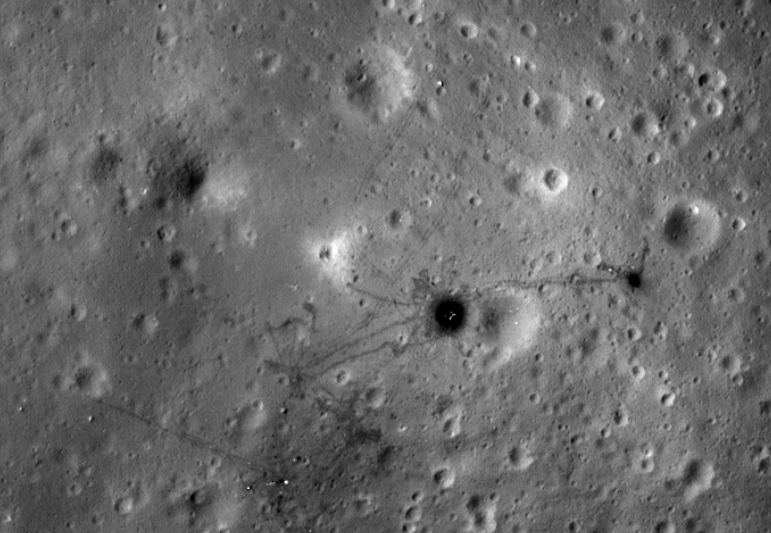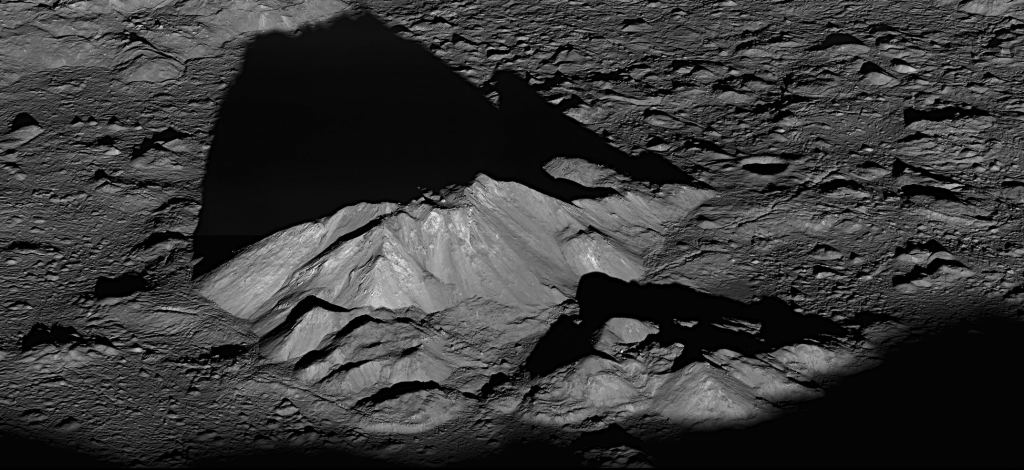Lunar Spacecraft Gets an Upgrade to Capture New Perspectives of the Moon
By Scott Alan Johnston
Eleven years into its mission, the Lunar Reconnaissance Orbiter (LRO) is starting to show its age, but a recent software update promises to give the spacecraft a new lease on life. As NASA’s eye in the sky over the Moon, the LRO has been responsible for some of the best Lunar observations since the days of Apollo. This new upgrade will allow that legacy to continue.
Launched in June 2009, the LRO quickly succeeded in mapping over 98% of the Moon’s surface at a resolution of 100 meters per pixel. The orbiter is also famous for taking incredible high-resolution images of the Apollo landing sites, in which landers, rovers, tire tracks, and astronaut footprints are clearly visible.

In 2016, the LRO found evidence that the Moon is geologically active as a result of tidal forces from the Earth, and also because the Moon is shrinking as its core cools. More recently, the LRO was able to observe the impact sites of both the Indian Space Research Organization’s Vikram lander, and SpaceIL’s Beresheet lander (both impressive and record-breaking missions, despite their ‘explosive’ endings).
The LRO’s monumental record of achievement has not made it immune to trouble, however. Its woes began in 2018, when the LRO’s aging Miniature Inertial Measurement Unit (MIMU), an instrument used to measure the spacecraft’s rotation, had to be shut down. Without the MIMU, the LRO has to rely solely on star trackers to orient itself. Star tracking is a perfectly feasible alternative to the MIMU, using stellar positions like a map to tell the spacecraft which direction it’s facing.
Without new software, however, the star tracking method prevented the LRO from making quick, complicated maneuvers required to take side-angle images of the Moon. These side-angle shots are important for two reasons. The first is that they allowed for photometry, or the ability to study how surface brightness changes from different perspectives. Second, they provide the ability to produce spectacular 3D images, giving the Moon’s geographical features a sense of depth and realism, which is sometimes missing from the map-like images created by taking straight-down shots.


To recover the LRO’s ability to quickly reorient itself for side-angle shots, the LRO team had to write a new algorithm, which they called ‘FastMan,’ short for ‘Fast Maneuvering’. It was brought online for the first time in 2020 and has proven to be a great success so far.
One of the challenges FastMan had to overcome was that if the star trackers were accidentally pointed at a bright object like the Sun, Moon, or Earth, they would lose their ability to orient the spacecraft. FastMan ensures that this does not occur.
Initially, FastMan required input from the ground in order to work in tandem with the flight software, but it has now been integrated so that FastMan can perform side-view maneuvers autonomously.

With the upgrade installed, the LRO is set to continue doing science well into the next decade. Regarding the LRO’s lifespan going forward, Noah Petro, Project Scientist for LRO at NASA Goddard, said that “fuel may be our rate-limiting factor, current estimates place us at having at least five more years of fuel onboard, if not more.”
Although the LRO has surpassed its initial mission goals, the spacecraft’s continued well-being will still be an asset in the coming years, not least because it will be able to support the Artemis program, which is ramping up to achieve the next human Lunar landing sometime this decade. Long Live the LRO!
Learn More: Bill Steigerwald, “Teaching an Old Spacecraft New Tricks to Continue Exploring the Moon,” GSFC.
The post Lunar Spacecraft Gets an Upgrade to Capture New Perspectives of the Moon appeared first on Universe Today.
February 14, 2021 at 11:26PM
via Universe Today read more...

Post a Comment